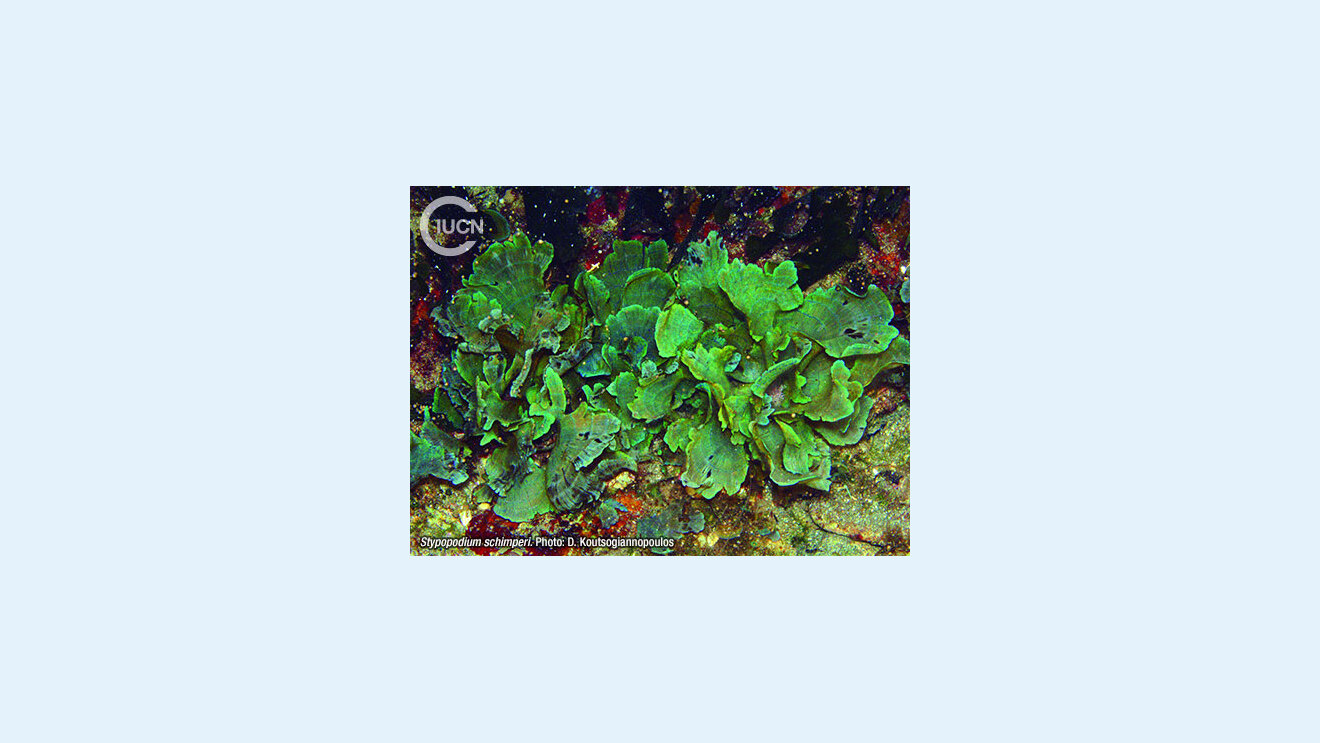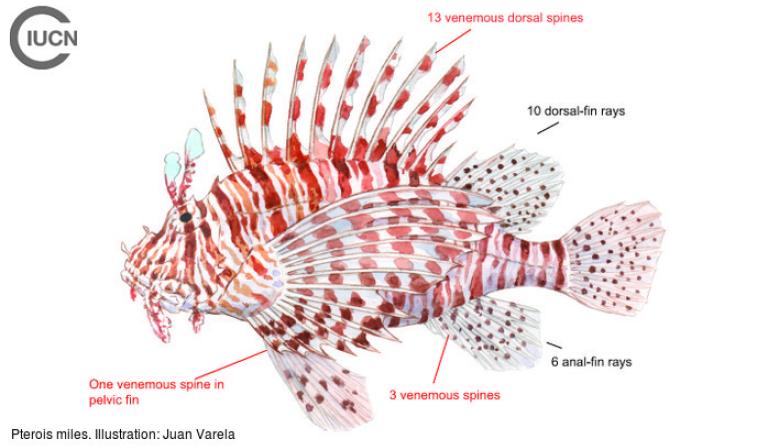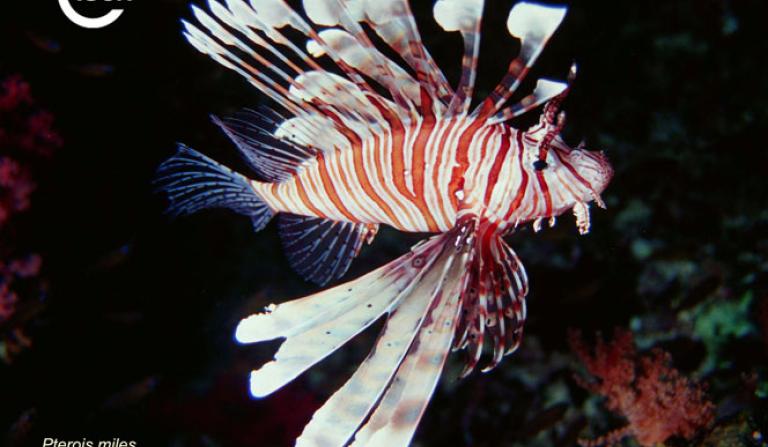Stypopodium schimperii
Information
Stypopodium schimperi is predominantly found on rocky substrates at depths of 0–20 m, although in the eastern Mediterranean it can be found down to 80 m.
Stypopodium schimperi undergoes alternation of generations; it can reproduce by both gametophyte and sporophyte structures, which are morphologically similar. Gametophytes can, however, be distinguished by the presence of discontinuous dark bands between the concentric bands.
It can be confused with the native alga Zonaria tournefortii. Both species are highly polymorphic, and the best character to distinguish them under a microscope is the number of cortical cell layers: 4–5 cell layers in S. schimperi and 1–2 in Zonaria tournefortii.

Native to the Indian Ocean, S. schimperi was probably introduced into the Mediterranean through the Suez Canal. At present, it is distributed throughout the eastern Mediterranean.
These are unknown; however, this brown alga tolerates varied local conditions and has no known predators.
Unknown.
Guiry M.D., Guiry, G.M. 2012. AlgaeBase. World-wide electronic publication, National University of Ireland, Galway. http://www.algaebase.org.
Einav, R. (2007). Seaweeds of the eastern Mediterranean coast. pp. [i-vi],[1-5]6-266. Ruggell, Liechtenstein: A.R.G. Gantner Verlag K.G.
Verlaque, M. & C.-F. Boudouresque, 1991. Stypopodium schimperi (Buchinger ex Kützing) Verlaque et Boudouresque comb. nov. (Dictyotales, Fucophyceae), algue de mer Rouge récemment apparue en Méditerranée. Cryptogamie, Algologie 12: 195-211, 69 figs.






